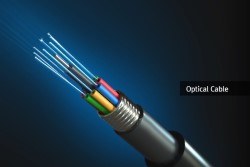What's the Difference between Fiber Optic, Cable, and DSL?
No matter where you live, internet connection is an important part of your life. Every time you go online, you use your bandwidth to view websites, watch videos, and listen to music. But a slow internet can seriously hinder your ability to effectively do things like stream video or even search Google. So how do you deal with this problem? Provides excellent internet speed to enhance user experience by having a reliable network. When looking for a new Internet connection, you may be debating between fiber, cable, and DSL. The three options offer different speed options and different prices, so it's important to understand each type before signing up for an internet package.
Glass Fiber
Fiber internet is one of the newest forms of internet available to consumers. It uses thin optical fibers to transmit data faster than copper wires. Fiber internet can deliver gigabit speeds - Gigabit internet can reach speeds of up to 1,000 Mbps (1 Gbps), faster than any other type of internet. While fiber optic cables have been around for a while, they are most commonly used in enterprise networks or other areas where traditional network cables cannot be routed due to physical barriers. It's also worth noting that fiber optic networks are more expensive than alternatives.
Cable

Cable internet is delivered over your local cable provider's coax cable, just like cable TV. Wired internet can provide fast download speeds for multiple devices in your home at the same time, but it can also cause delays when other people in your home are streaming movies or downloading files.
Broadband

DSL stands for Digital Subscriber Line, which means that the Internet is provided over existing telephone lines. A DSL modem plugs into your phone jack and uses your existing phone line to bring high-speed internet to your home. DSL service providers use different technologies to provide different download and upload speeds while maintaining a reliable connection.
Take away
All in all, if you want your internet to be fast, fiber is the way to go. It's the fastest internet, offering speeds up to 100 times faster than your standard cable or DSL provider, but it comes at a high price. Cable is generally cheaper and offers comparable speeds, but it has many disadvantages of its own.
DSL tends to be the cheapest option, but offers the slowest speeds and the most limitations—although coverage may be good in some areas. Whatever your situation, consider these factors before deciding on a specific provider. But if you want strong, consistent service that won't break the bank, DSL is probably your best bet—as long as your phone line can handle it first.











